| Know about East India |
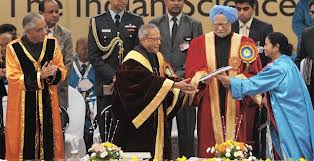
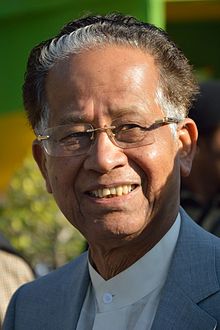
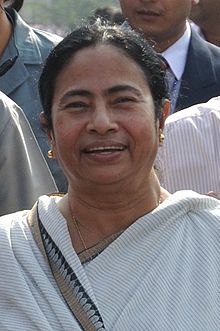
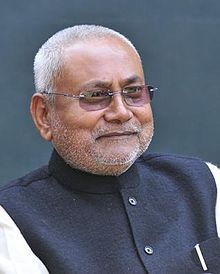
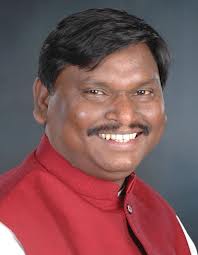
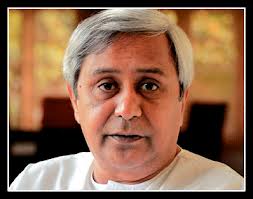


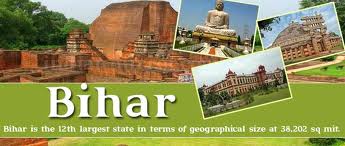
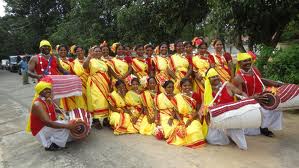

|
West Bengal
wp.gov.in
About Governor
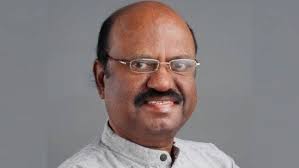 |
Shri C. V. Ananda BoseIn 1911 the imperial capital of India was moved from Calcutta to Delhi and as some compensation to Bengal the lieutenant governor with council gave place to a governor with a council thus completing the circle and reverting to the position which had been obtained 200 years ago. In 1947 India achieved independence and the title of Governor of Bengal remained.
Manipur governor La Ganesan had been holding the additional charge of West Bengal since July after the former governor, Jagdeep Dhankhar, quit the post to contest for the vice-presidential election.
CV Ananda Bose has been appointed governor of West Bengal. In a statement, the office of President Droupadi Murmu said, The President of India is pleased to appoint Dr C V Ananda Bose as regular governor of West Bengal.
Powers and functions
The governor enjoys many different types of powers:
- Executive powers related to administration, appointments and removals
- Legislative powers related to lawmaking and the state legislature, that is Vidhan Sabha or Vidhan Parishad, and
- Discretionary powers to be carried out according to the discretion of the governor.
Manipur governor La Ganesan had been holding the additional charge of West Bengal since July after the former governor, Jagdeep Dhankhar, quit the post to contest for the vice-presidential election.
Five things you need to know about new West Bengal governor Ananda Bose:
- CV Ananda Bose, a former civil servant, had served in the Indian Administrative Services.
- Bose has worked as University vice-chancellor, additional chief sectary, and district collector.
- He is the chairman of Habitat Alliance in consultative status with the United Nations.
- Bose is the recipient of the prestigious Jawaharlal Nehru Fellowship. He is also the first-ever fellow of the Lal Bahadur Shastri National Academy of Administration Mussoorie, which trains the top civil servants of the nation.
- A writer and columnist, Bose has published 40 books in English, Malayalam, and Hindi including novels, short stories, poems, and essays. Some of his books have become best sellers, according to The Institute of Cost Accountants of India website.
About Chief Minister
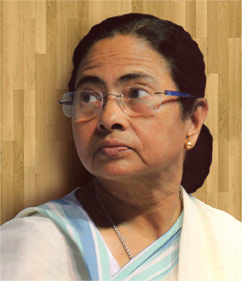 |
| 1. Name of the Chief Minister |
Mamata Promileswar Banerjee
|
| 2. Father Name |
LATE PROMILESWAR BANERJEE
|
| 3. Mother's Name |
LATE GAYATRI BANERJEE
|
| 4. Date of Birth |
born 5 January 1955 |
| 5. Place of Birth |
KOLKATA (WEST BENGAL) |
| 6. EDUCATIONAL QUALIFICATIONS |
M.A., B.Ed., LL.B., Trained in Work Education, Educated at Calcutta University, West Bengal
|
| 7. PROFESSION : |
Fulltime Political Activist and Social Worker
|
| 8. PERMANENT ADDRESS : |
30-B, Harish Chatterjee Street, Kolkata-700 026, West Bengal
Tels. (033) 24753000
Fax. (033) 24540880
E-mail : cm-wb@nic.in |
| 9. Positions Held |
1977-83 Member, West Bengal Youth Congress Working Committee
1979-80- General-Secretary, Mahila Congress (I), West Bengal
1978-81- Secretary, District Congress Committee (Indira)[D.C.C. (I)], Calcutta South
1984- Elected to 8th Lok Sabha General-Secretary, All India Youth Congress (I)
1985-87- Member, Committee on the Welfare of Scheduled Castes and Scheduled Tribes
1987-88- Member, National Council, All India Youth Congress (I) Member, Consultative Committee, Ministry of Home Affairs Member, Consultative Committee, Ministry of Human Resource Development
1988- Member, Executive Committee, Congress Parliamentary Party [C.P.P. (I)]
1989- Member, Executive Committee, Pradesh Congress Committee [P.C.C. (I)], West Bengal
1990- President, Youth Congress, West Bengal
1991- Re-elected to 10th Lok Sabha (2nd term)
1991-93- Union Minister of State, Human Resource Development, Department of Youth Affairs and Sports; and Women and Child Development
1993-96- Member, Committee on Home Affairs
1995-96- Member, Consultative Committee, Ministry of Home Affairs Member, Committee on Public Accounts
1996 -Re-elected to 11th Lok Sabha (3rd term)
1996-97- Member, Committee on Home Affairs Member, Consultative Committee, Ministry of Home Affairs
1997- Founded All India Trinamool Congress and elected Chairperson, All India Trinamool Congress
1998 Re-elected to 12th Lok Sabha (4th term)
1998-99 -Chairman, Committee on Railways Member, General Purposes Committee Member, Consultative Committee, Ministry of Home Affairs
1999- Re-elected to 13th Lok Sabha (5th term) Leader, All India Trinamool Congress Parliamentary Party, Lok Sabha Member, General Purposes Committee
13 Oct. 1999- - 16 Mar. 2001 Union Cabinet Minister, Railways
2001-2003- Member, Consultative Committee, Ministry of Industries
8 Sep. 2003- - 8 Jan. 2004 Union Cabinet Minister (without any portfolio)
9 Jan. 2004- May 2004 Union Cabinet Minister, Coal and Mines 2004 Re-elected to 14th Lok Sabha( 6th term) Member, Committee on Personnel, Public Grievances, Law & Justice
5 Aug. 2006- Member, Committee on Home Affairs
5 Aug. 2007- Member, Committee on Home Affairs
2009 Re-elected to 15th Lok Sabha (7th term)
31 May 2009- Union Cabinet Minister
20 May 2011- Sworn-in as the first woman Chief Minister of West Bengal.
27 May 2016- Sworn-in for the second time as Chief Minister of West Bengal. |
| 10. BOOKS PUBLISHED |
In Bengali : (i) Upalabdhi; (ii) Janatar Darbare; (iii) Maa; (iv)Pallabi; (v) Manavik; (vi) Motherland ; (vii) Crocodile Island; (viii) Trinamool; (ix) Sishu Sathi; (x) Anubhuti; (xi)Abishasya; (xii) Janmaini; (xiii) Ekantee; (xiv) Ashubho Shanket;(xv) Jago Banglaa; (xvi) Ganotantre Lajja; (xvii) Anoson Keno; (xviii) Soroni; (xix) Langol; (xx) Andolaner Katha; (xxi) Maa-Mati-Manush; (xxii) Ajab Chora; (xxiii) Ek Guchho Bhavana; (xxiv) Nandi-Maa; (xxv) Netai; (xxvi) Cholo-Jai ; (xxvii) Note Kotha; (xxviii) Singur Joyee; (xxix) Manusher Joy 2016; (xxx) Byaktityo; (xxxi) Namanjoli Dwitiyo; (xxxii) Khushbu;(xxxiii) Mojar Chora
In English : (xxxiii) Struggle for Existence; (xxxiv) Smile; (xxxv) Dark Horizon; (xxxvi) Slaughter of Democracy |
| 11. LITERARY ACCOMPLISHMENTS |
Given music and written lyrics for Bengali songs and received 4 Golden Disc |
| 12. SOCIAL AND CULTURAL ACTIVITIES |
Connected with different social and human rights organisations to promote the welfare of poor, children and women; providing free legal aid to the poor and working for the protection of human rights; organised various health camps for mothers and children |
| 13. OTHER INFORMATION |
Represented the country in (i) in U.N. General Assembly; (ii) as a woman parliamentarian at World Women Round Table Conference, Russia; and (iii) World Youth Conference, Vietnam; attended the Working Women Conference of ILO and ICFTU at Kuala Lumpur; observed Dharna in 1995 for 21 days to restore Human Rights; protested against atrocities on women and lock up deaths in the country, specially in West Bengal. |
Cities of East Inida
West Bengal
Indian statesman Gopalkrishna Gokhale once said -- "....what Bengal thinks today, India thinks tomorrow!" Renowned worldwide as a thriving, dynamic centre for art & literature, West Bengal's location, fascinating culture, people history and heritage have made this statement true in more ways than one.
Soul of Bengal "Banglar mati, banglar jol".....West Bengal is one of the most culturally and ethnically diverse states of India. The people of West Bengal inherit their identity and aspiration from the larger Indian mosaic. One can still recapture the colonial era in its relics which survived the state's progressive development. The land of West Bengal has in it intricately woven stories of many bright mornings and dark nights; stories of many civilisations have left their footprints here. Awash in the memory of that rich history and heritage West Bengal boasts of different ethnicities, cultures, religions, people and languages which add to this beautiful landscape. And that is why Deshbandhu Chittaranjan once said - "There is an eternal truth in the soil of Bengal. ....It is that eternal truth that has been expressed through innumerable changes, evolution and revolutions in Bengal. It is that truth which has proclaimed itself in literature, philosophy, poetry, war, revolution, religion and karma, in ignorance, in unrighteousness, in freedom and in subjection. That is Bengal's life - Bengal's soil and Bengal's water are the external forms of that life."
Essence of Bengal West Bengal is located at the centre of the Eastern Region of India. It is the nation's fourth most populous state. The state of West Bengal borders the states of Jharkhand, Bihar, Orissa, Sikkim and Assam and is strategically positioned with three international frontiers Bangladesh, Nepal and Bhutan. It stretches for about 700 km, from the blue waters of the Bay of Bengal in the South to the Himalayan terrain in the North. Being such an important region of the Indian independence movement through the early 20th century, Bengal was divided in 1947 into two separate entities: West Bengal - a state of India - and East Bengal, which initially joined the new nation of Pakistan, before becoming part of modern-day Bangladesh in 1971. Agriculture is the main economic activity in the state.
Kolkata
Kolkata is the capital of the Indian state of West Bengal. It is also the commercial capital of East India, located on the east bank of the Hooghly River. The city of Kolkata has 4.5 million residents, and the metropolitan area, including suburbs, has a population of approximately 15.7 million, making it the third most populous metropolitan area in India and the 13th most populous urban area in the world. The city is also classified as the eighth largest urban agglomeration in the world.
Kolkata was the capital of India during British emperor. The city's documented history, however, begins with the arrival of the English East India Company in 1690, when the Company was consolidating its trade business in Bengal. Job Charnock, an administrator with the company was traditionally credited as the founder of the city. In 2003 high court order states that the city should not have a specific founder. While the city's name was always pronounced "Kolkata" in the local Bengali language, its official English name was changed from "Calcutta" to "Kolkata" in 2001, reflecting the Bengali pronunciation. Some view this as a move to erase the legacy of British rule.
Kolkata Art & Culture
Kolkata has long been known for its literary, artistic and revolutionary heritage. As the former capital of India, Kolkata was the birthplace of modern Indian literary, artistic and scholastic thought. The people of Kolkata tends to have a special appreciation for art and literature; its tradition of welcoming new talent has made it a "city of furious creative energy.
For these reasons, Kolkata has often been dubbed as the Cultural Capital of India or the Literary Capital of India. Cultural extravaganza in Kolkata include
Dooars
Dooars - The place where nature has kept its doors open. Derived from the word 'doors' (doors to Bhutan), this region, located in the district of Jalpaiguri and Cooch Behar, forms a gateway to the hill stations of North Bengal, Sikkim, Bhutan & North-Eastern states. The dense natural forests, interwoven with lush green tea gardens, criss-crossed by Teesta, Raidak, Torsha, Jaldhaka, Kaljani and other rivers & their innumerable tributaries rolling down the hills fill up your senses with sublimity.
Darjeeling
Darjeeling conjures visions of snow peaks, serenity of vibrant green hills steeped in splendour, a land of breathtaking beauty crowned by the majestic Himalayas. Darjeeling is one of the most magnificent hill resorts in the world. This heavenly retreat is bathed in hues of every shade. Flaming red rhododendrons, sparkling white magnolias, miles of undulating hillsides covered with emerald green tea bushes, the exotic forests of silver fir - all under the blanket of a brilliant azure sky dappled with specks of clouds, compellingly confounds Darjeeling as the QUEEN OF HILL STATIONS. The crest of Kanchenjunga shining in the first dawn light truly supports the title.
Darjeeling beckons thousands today for a leisurely respite from the bustle of the madding crowd. The traveller - whether a tourist or a trekker, an ornithologist or a photographer, a botanist or an artist - will find in Darjeeling an experience which will remain etched in the memory - forever.
Sunderbans
Sunderbans, the world's largest estuarine forest and delta covered by mangrove forests and vast saline mud flats is situated on the lower end of Gangetic West Bengal. A land of 54 tiny islands, criss-crossed by innumerable tributaries of the Ganges that was once infested by Arakanese and Portuguese pirates is now the abode of varied flora & fauna population. Sunderban is bound on the west by river Muriganga and on the east by rivers Harinbhahga and Raimangal. Other major rivers flowing through this eco-system are Saptamukhi, Thakurain Matla and Gosaba.
Unlike other wildlife parks, where roads, jeeps & guides provide a semblance of control, here visitors will find themselves holding their breath and stiffening to a state of alertness as their boats glide through the creeks and rivulets, bordered with primeval mangrove forest sheltering the most unimaginable dangers in its impenetrable undergrowth. A unique region where there are no borders to divide fresh from saline water, river from sea.
With a little luck one may experience a salt water Crocodile sunbathing in the mud; a flash in the corner of your eye could be Deer running into the forests. Most famously, however, this protected area is home to the Royal Bengal Tiger. There are strategically placed watch towers from which, fortunate travellers may get the opportunity to observe the regal beast in its natural surroundings, a thrill that can only be experienced first-hand. Incidentally, these watch towers may be reached only through corridors covered in protective net fencing.
You can explore the wildlife of Sunderban that harbours Jungle Cats, Fishing Cats, Axis Deer, Wild Boar, Rhesus Monkeys, Mongooses and the largest Estuarine Crocodiles in the world. Sunderban is the breeding ground of immense variety of birds like Heron, Egret, Cormorant, Fishing Engle, White Bellied Sea Eagle, Seagul, Tern, Kingfisher as well as migratory birds like Whimprel, Black-tailed Godwit, Little Stint, Eastern Knot, Curlew, Sandpiper, Golden Plover, Pintail, White-eyed Pochard and also Whistling teal. Come and discover wide variety of aquatic and reptile life forms that include Olive Ridley sea turtle, hardshelled Batgur Terrapin, Pythons, King Cobra, Chequered Killback, Monitor and Lizards including the Salvator Lizards.
Shantiniketan
Shantiniketan is a small town near Bolpur in the Birbhum District of West Bengal and about 212 kms north of Kolkata. It is famous due to Nobel laureate Rabindranath Tagore, whose vision became what is now a University town - Visva-Bharati University. The place now attracts thousands of visitors each year.
Shantiniketan was earlier called Bhubandanga (named after Bhuban Dakat, a local Dacoit), and was owned by the Tagore family. In 1862, Maharishi Devendranath Tagore, the poet's father, while on a boat journey to Raipur, came across a landscape with red soil and lush green paddy fields. He decided to plant more saplings and built a small house. He called his home Shantiniketan. He founded an ashram here in 1863 and became the initiator of the Bramho Samaj.
In 1901, Rabindranath started a school at Shantiniketan named Bramhachari Ashram that was modeled on the lines of the ancient Gurukul system that later came to be known as the Patha Bhavan, the school of his ideals, with central premise that learning in a natural environment would be more enjoyable and fruitful. With the financial backing of the Maharajah of Tripura, the Visva-Bharati Society was established in 1921. Tagore envisioned a center of learning which would have the best of both the east and the west. Nobel Prize (1913) won by Rabindranath Tagore, not only the enhanced the pride of India but also the prestige of Shantiniketan. The school was expanded into a University. It was named Visva-Bharati, which was defined by Tagore as "Where the world makes a home in a nest." The Open-air education as opposed to being cloistered in the four walls of a classroom became a reality here. Eminent people from all over the world came to Visva-Bharati during its peak period. Visva-Bharati became a Central University in 1951. Leaves of the Chhatim (Saptaparni - or 7-leaf sprigs) trees are given to graduating students at the annual convocation. Many world famous teachers have become associated with it over the years. Indira Gandhi, Satyajit Ray, and Amartya Sen are among its illustrious students. The Prime Minister of India is the Chancellor of the University.
Assam
assam.gov.in
About Chief Minister
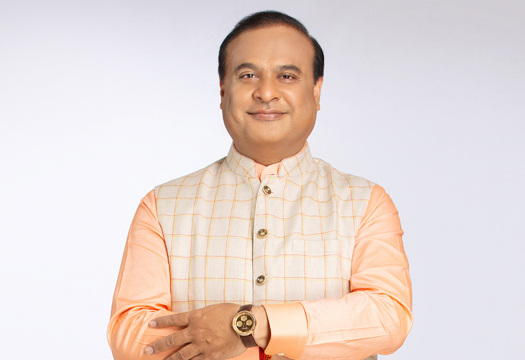 |
Dr. Himanta Biswa SarmaSri Himanta Biswa Sarma is the 15th Chief Minister of Assam. On 10 May 2021, Sarma has sworn in as the Chief Minister of Assam, succeeding his colleague Sarbananda Sonowal. Himanta Biswa Sarma was elected to the Assam Legislative Assembly from Jalukbari Assembly Constituency for the first time in 2001 was re-elected from the same constituency in 2006, and 2011 on Congress ticket and in 2016, and 2021 on BJP's ticket.
Himanta Biswa Sarma was born on 1 February 1969 at Mission Hospital, Jorhat, Assam, India to Kailash Nath Sarma and Mrinalini Devi. He passed his senior secondary examination from Guwahati's Kamrup Academy School in 1985. He completed his graduation and post-graduation in Political Science from Cotton College, Guwahati in 1990 and 1992 respectively. He earned his L.L.B. degree from Government Law College, Guwahati, and obtained a Ph.D. degree from Gauhati University.
He held several portfolios (both state and cabinet) such as Minister of State for Agriculture, Planning & Development, Finance, Health, Education, and Assam Accord Implementation from 2002 to 2021
Government of India in its various annual reports had singularly pointed out the achievements of the Health and Education departments of Assam. During his tenure, more than 50,000 teachers were appointed for the first time through TET after he abolished the system of interviews.
About Governor
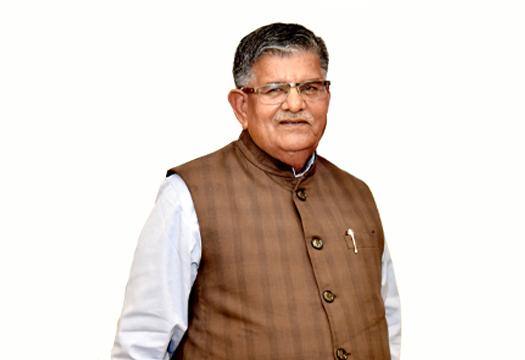 |
Shri Gulab Chand Kataria
Gulab Chand Kataria is the 31st Governor of Assam. Chief Justice Gauhati High Court Justice Sandeep Mehta administered the oath of office to the new Governor. Shri Gulab Chand Kataria hails from Udaipur, Rajasthan. He was the former Home Minister of Rajasthan and a leader of opposition in the Rajasthan Legislative Assembly prior to his appointment as the Governor.
Some of the notable achievements credited to him are, he was the Home Minister in the Government of Rajasthan from 31st May 2004 to 8th December 2008 and again from 2015 to 2018. He was a senior leader of BJP from Rajasthan and was also a member of the central working committee of the party. He hails from Udaipur and has represented it in 9th Lok Sabha, from 1989-1991. He was also the Leader of Opposition in the Rajasthan Legislative Assembly from 24th August 2002 to December 2003, again from 21st February 2013 to 10th December 2013, and from 17th January 2019 to 2023 till his appointment as the Governor.
He served as the Education Minister of the State from 1993 to 1998. He also served as Public Works Department Minister from 8th December 2003 to 30th May 2004. He was the Panchayati Raj and Rural Development, Disaster Management and Relief Department Minister from 2013 to 2015. Gulab Chand Kataria was born to Late Hukmi Chand Kataria and Late Lahari Bai on 13th October 1944. He did his Masters in Geography from Mohanlal Sukhadia University, Udaipur. He studied Law also from Mohanlal Sukhadia University, Udaipur. He is married to Smt Anita Kataria and has 5 daughters. He also received the Excellent Teacher Award by Jiwanmal Nahata Memorial Trust, New Delhi on 5th September, 2006.
Assam
Assam is a land of fairs and festivals. Most of the festivals celebrated in Assam characterize the spirit of accommodation and togetherness in the diverse faith and belief of her inhabitants. This perfect fusion of heritage of her numerous races has made Assam the home of the most colorful festivals reflecting the true spirit, tradition and lifestlye of the people of Assam.
The major festivals celebrated in Assam are Bihu, Baishagu, Ali-Ai-Ligang, Baikho, Rongker, Rajini Gabra Harni Gabra, Bohaggiyo Bishu, Ambubashi Mela and Jonbill Mela and so on.
The people of Assam also celebrate Holi, Durga Puja, Diwali, Swaraswati Puja, Lakshmi Puja, Kali Puja, Idd, Muharram, Me-Dam-Me-Phi, the birth and death anniversaries of Vaishnava Saints Srimanta Sankardev and Madhabdev.
The tribals of Assam have their own colourful festivals like the Kherai Puja of the Bodos, the Baikhu and Pharkantis of the Rabhas, Ali-ai-ligang and Parag of the Mishing tribe, the Sagra-misawa wansawa and laghun of the Tiwas.
Bihu
Bihu is the most important festival of Assam. It is celebrated with joy and abundance by all Assamese people irrespective of caste, creed, religion, faith and belief.
Three Bihus are celebrated in a year: Bohag Bihu which augurs the wish for a good harvest because this is the time when farmers start sowing, Kaati Bihu which is observed to mark the cutting and binding of grains and Magh Bihu which marks the season of harvesting of grains.
Me-Dum-Me-Phi
The most important Ahom festival which deserves mention is the Me-Dum-Me-Phi, i.e., the ancestor worship festival which is observed by the whole Ahom community. This is performed annually on the 31st of January and helps to develop social contacts and community feelings among the Ahoms. Colourful processions with devotees in traditional finery are also taken out on the occasion.
Baishagu
Famous for its myriad colours and merriment, 'Baishagu' is generally celebrated by the Bodo Kacharis during mid April. It is the most cherished festival of the Bodo tribe. The Bodos also celebrate it as a springtime festival at the advent of the new year.
Ambubachi Mela
Is the most important festival of Kamakhya temple of Guwahati and is held every year during monsoon (mid-June). It is a ritual of austerities celebrated with 'Tantric rites'.
During Ambubashi the doors of the temple remain closed for three days. It is believed that the earth becomes impure for three days. During this time no farming work is undertaken.
Ambubachi mela is held at the Kamakhya temple, after being closed for the afore-mentioned three days. On the fourth day only the devotees are allowed to enter inside the temple for worship. Thousands of devotees from all over the country and abroad visit this mela..
Bihar
www.gov.bih.nic.in
About Chief Minister
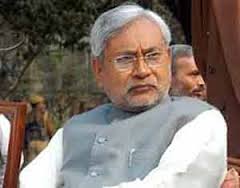 |
| 1. Name of the Chief Minister |
Shri Nitish Kumar
|
| 2. Father Name |
Late Shri Kaviraj Ram Lakhan Singh
|
| 3. Mother's Name |
Late Smt. Parmeshwari Dev
|
| 4. Date of Birth |
1st March, 1951. |
| 5. Place of Birth |
Bakhtiarpur, District - Patna, State - Bihar |
| 6. Marital Status |
Married. |
| 7. Spouse's Name |
Late Smt. Manju Kumari Sinha. |
| 8. EDUCATIONAL QUALIFICATIONS |
B.Sc. (Engineering)Educated at Bihar College of Engineering, Patna, Bihar.
|
| 9. PROFESSION : |
Political & Social Worker, Agriculturist, Engineer.
|
| 10. PERMANENT ADDRESS : |
Village - Hakikatpur, PO - Bakhtiarpur, District - Patna, Bihar |
| 11. Positions Held |
1977-83 Member, West Bengal Youth Congress Working Committee
1985-89 : Member, Bihar Legislative Assembly.
1986-87 : Member, Committee on Petitions, Bihar Legislative Assembly.
1987-88 : President, Yuva Lok Dal, Bihar.
1987-89 :
Member, Committee on Public Undertakings, Bihar Legislative Assembly.
1989 : Secretary-General, Janata Dal, Bihar.
1989 : Elected to 9th Lok Sabha.
1989-16/7/1990 : Member, House Committee (Resigned).
4/1990-11/1990 : Union Minister of State, Agriculture and Co-operation.
1991 : Re-elected to 10th Lok Sabha (2nd term).
1991-93 : General-Secretary, Janata Dal.
Deputy Leader of Janata Dal in Parliament.
17/12/91-10/5/96 : Member, Railway Convention Committee.
8/4/93-10/5/96 : Chairman, Committee on Agriculture.
1996 : Re-elected to 11th Lok Sabha (3rd term).
Member, Committee on Estimates.
Member, General Purposes Committee.
Member, Joint Committee on the Constitution (Eighty-first Amendment Bill, 1996).
1996-98 : Member, Committee on Defence.
1998 : Re-elected to 12th Lok Sabha (4th term).
19/3/98-5/8/99 : Union Cabinet Minister, Railways.
14/4/98-5/8/99 : Union Cabinet Minister, Surface Transport (additional charge).
1999 : Re-elected to 13th Lok Sabha (5th term).
13/10/99-22/11/99 : Union Cabinet Minister, Surface Transport.
22/11/99-3/3/00 : Union Cabinet Minister, Agriculture.
3/3/00-10/3/00 : Chief Minister, Bihar.
27/5/00-20/3/01 : Union Cabinet Minister, Agriculture.
20/3/01-21/7/01 : Union Cabinet Minister, Agriculture with additional charge of Railways.
22/7/01-21/5/04 : Union Cabinet Minister, Railways.
2004 : Re-elected to 14th Lok Sabha (6th term).
Member, Committee on Coal & Steel.
Member, General Purposes Committee.
Member, Committee of Privileges.
Leader Janata Dal (U) Parliamentary Party, Lok Sabha.
24/11/2005-24/11/2010 Chief Minister, Bihar.
26/11/2010-17/05/2014 Chief Minister, Bihar.
From 22/02/2015 Chief Minister, Bihar |
| 12. Countries Visited |
Widely traveled in various capacities:
Singapore, Thailand.
Havana (Cuba) and Moscow (Russia) - as a member of Indian Delegation to the World Youth Festival in 1978.
Australia and France - as a Member of Indian Parliamentary Delegation to the IPU Conference.
France, Switzerland and UK - as the Railway Minister.
Japan - as the Agriculture Minister to attend Regional Conference of FAO in Yokohama. |
| 13. OTHER INFORMATION |
Activist of J.P. Movement (1974-77); was detained in 1974 under the Maintenance of Internal Security Act (M.I.S.A.) and also during Emergency in 1975; Founder-member, Samata Party Movement. |
About Governor
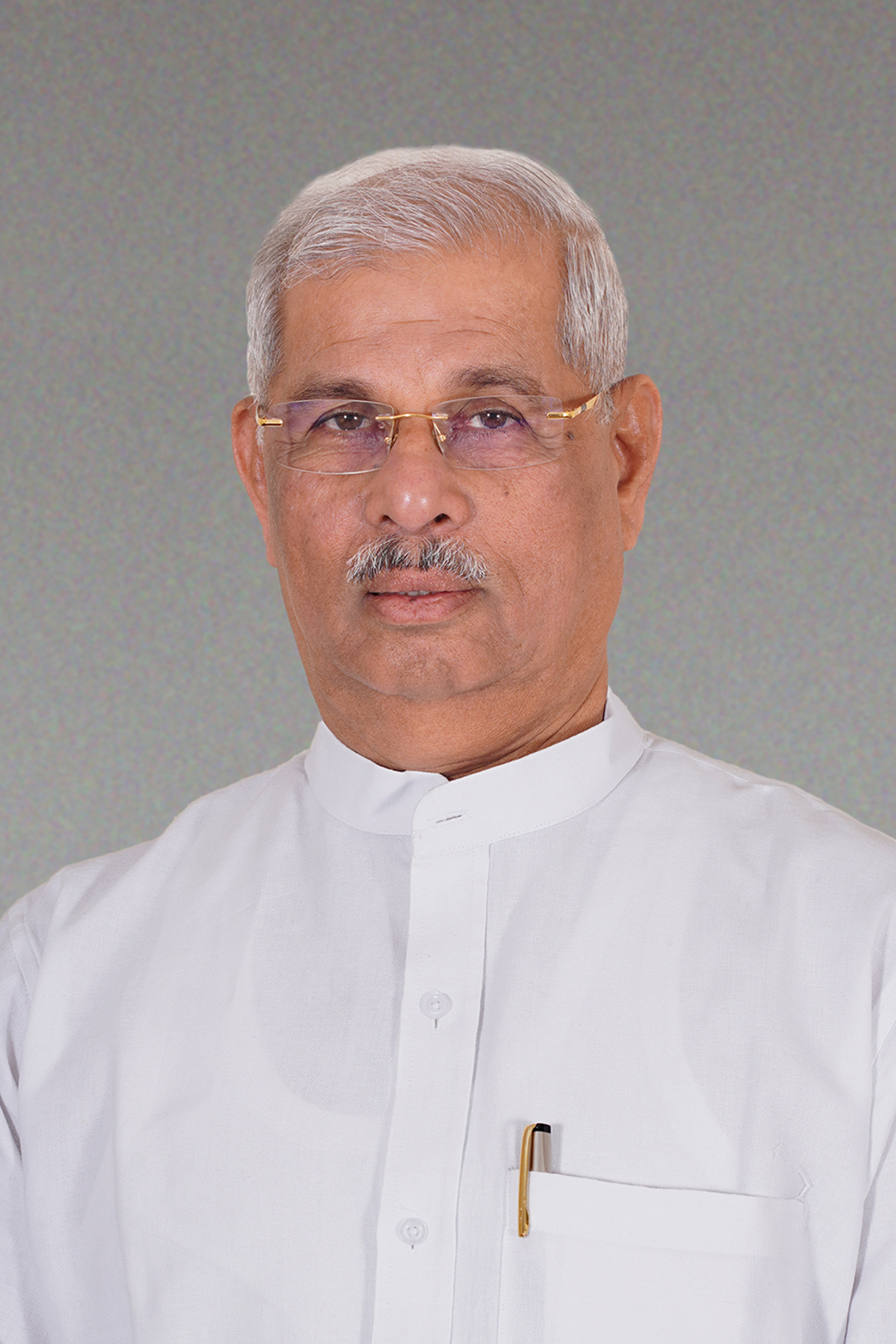 |
Shri Rajendra Vishwanath Arlekar
The Governor of Bihar is the Constitutional Head of the State of Bihar and exercises powers as defined in the Constitution of India. The Governor is also the ex-officio Chancellor of universities in the State. The Governor Secretariat provides secretarial assistance to the Governor in discharging his constitutional, ceremonial and other State responsibilities and his duties as the Chancellor of universities in the State.
The Governor Secretariat is headed by the Secretary to the Governor who is assisted by a team of officers and staff as per details available under the head organization. The Governor Secretariat includes the Secretariat and Household establishments.
The Governor of Bihar is the Constitutional Head of the State of Bihar and exercises powers as defined in the Constitution of India. The Governor is also the ex-officio Chancellor of universities in the State.The Governor Secretariat provides secretarial assistance to the Governor in discharging his constitutional, ceremonial and other State responsibilities and his duties as the Chancellor of universities in the State.
The Governor Secretariat is headed by the Secretary to the Governor who is assisted by a team of officers and staff as per details available under the head organization. The Governor Secretariat includes the Secretariat and Household establishments.
The Governor Secretariat is located at
Raj Bhavan, Patna-800 022
Telephone: 0612-2786100
Bihar
Bihar's antiquity is evident from its name, which is derived from the ancient word "VIHARA" (monastery). It is indeed a land of monasteries. Hindu, Buddhist, Jain, Muslim and Sikh shrines abound in this ancient land where India's first major empires rose and fell. Where the ruins of the worlds' earliest university slumbers in the void of time. The passage of Ganga, flowing wide and deep enrich the plains of Bihar before distributing in Bengal's deltoid zone.
Among all Indian states, Bihar is the one most intimately linked to the Buddha's life, resulting in a trail of pilgrimages which have come to be known as the Buddhist circuit. The Buddhist trail begins at the capital city, Patna, where a noteworthy museum contains a collection of Hindu and Buddhist sculptures as well as a terracotta urn said to contain the ashes of Lord Buddha.
The Khuda Baksh Oriental Library has rare Muslim manuscripts including some from the University of Cordoba in Spain. 40 km away, Vaishali, was the site for the second Buddhist Council is the presence of ruins testify. 90 km south of Patna is Nalanda which translates as the place that confers the lotus' (of spiritual knowledge). A monastic university flourished here from the 5th to the 11th century. It is said to have contained nine million books, with 2,000 teachers to impart knowledge to 10,000 students who came from all over the Buddhist world. Lord Buddha himself taught here and Hieun Tsang, the 7th century Chinese traveler, was a student. Ongoing excavations have uncovered temples, monasteries and lecture halls. Rajgir, ‘the royal palace', 12 km south, was the venue for the first Buddhist Council.
The Buddha spent five years at Rajgir after having attained enlightenment, and many of the remains at Rajgir commemorate various incidents related to life of Buddha, the hill of Gridhrakuta being perhaps the most important, as this is where the Buddha delivered most of his sermons. Bodhgaya is the spot where Lord Buddha attained enlightenment, with the Mahabodhi Temple marking the precise location.
This landlocked state of Bihar is surrounded by Nepal, Bengal, Orissa, Madhya Pradesh, Uttar Pradesh and comprises four cultural regions-Bhojpur, Mithila and Magadha and Chotanagpur. Rivers Kosi and Gandak from the north and Sone from the south join the Ganga. In the fertile plains, rice, sugarcane, oilseeds, gram, maize, jute, barley and wheat are cultivated.
Patna
Patna once called Pataliputra the capital of Bihar,is among the world's oldest capital cities with unbroken history of many centuries as imperial metropolis. A very fertile arched stretch of land along the bank of the Ganga. The history and heritage of modern day Patna go back well over two millennia. Like Delhi, Patna too had been the regal seat of governance for successive kingdoms since ancient times. And to this day, it is the capital city of the state. As each ruler ascended in power and established dynastic glory, he gave his capital a new name. Thus, the ancient Kusumpura metamorphosed through Pushpapura, Pataliputra, Azeemabad and now into Patna, a continuous history ranging from 6th century BC to present times - a record claimed by few cities in the world. It was Ajatshatru the Magadha king who first built a small fort in Pataligram on the bank of the Ganga in 6th century BC, which later blossomed into the ancient glory still to be seen in the neighboring archaeological sites at Kumrahar. Bhiknapahari, Agamkuan, Bulandi Bagh and Kankar Bagh. Pataliputra dominated the political fortunes of the whole of north India between 6th century BC and 5th century AD, a fact established by archaeological excavations. After a temporary eclipse, in 16th century, Sher Shah Suri returned the city to its former glory and established the present Patna. After the decline of the Mughals, the British too found Patna a convenient regional capital and built a modern extension to this ancient city and called it Bankipore. It was in Gandhi Maidan in this area, that Mahatma Gandhi held his prayer meetings.
Nalanda
Nalanda, founded in the 5th century AD, is famous as the ancient seat of learning. The ruins of the world's most ancient university lies here which is 62 km from Bodhgaya and 90 km south of Patna. Though the Buddha visited Nalanda several times during his lifetime, this famous center of Buddhist learning shot to fame much later, during 5th-12th centuries. Hieun Tsang stayed here in the 7th century AD and left detailed description of the excellence of education system and purity of monastic life practiced here. He also gave a vivid account of both the ambiance and architecture of this unique university of ancient times. In this first residential international university of the world, 2,000 teachers and 10,000 monks students from all over the Buddhist world lived and studied here. The Gupta kings patronized these monasteries, built in old Kushan architectural style, in a row of cells around a courtyard. Emperor Ashoka and Harshavardhana were some of its most celebrated patrons who built temples, monasteries and viharas here. Recent excavations have unearthed elaborate structures here. An International Center for Buddhist Studies was established here in 1951. Nearby is Biharsharif, where an annual urs is celebrated at the Dargah or tomb of Malik Ibrahim Baya. Baragaon, 2 km away has a sun temple, famous for Chhath puja. To be visited are Nalanda museum & Nava Nalanda Mahavihar in addition to the great ruins.
Kushinagar
Kushinagar - Set against a pastoral landscape, the small hamlet of Kushinagar, 53 km west of Gorakhpur, is revered as the site of the Buddha's Mahaparinirvana, his death and cremation, that marked his final liberation from the cycles of death and rebirth.
During Buddha's lifetime, Kushinara, as it was then called, was a small town in the kingdom of the Mallas, surrounded by a thick forest cover. It remained forgotten, until the late nineteenth century, when archaeologists rediscovered the site, and began excavations.
Today, Kushinagar is rediscovering its roots, as a center for international Buddhism, and is home to many viharas, including a Tibetan gompa devoted to Sakyamuni, a Burmese vihara, and temples from China and Japan.
Vaishali
Vaishali today is a small village surrounded by banana and mango groves as well as rice fields. But excavations in the area have brought to light an impressive historical past. The epic Ramayana tells the story of the heroic King Vishal who ruled here. Historians maintain that one of the world's first democratic republics with an elected assembly of representatives flourished here in the 6th century B.C. in the time of the Vajjis and the Lichchavis. And while Pataliputra, capital of the Mauryas and the Guptas, held political sway over the Gangetic plain, Vaishali was the center for trade and industry.
Lord Buddha visited Vaishali frequently and at Kolhua, close by, preached his last sermon. To commemorate the event, Emperor Ashoka, in the third century B.C. erected one of his famous lion pillars here. A hundred years after the Mahaparinirvana of the Buddha - Vaishali hosted the second great Buddhist council. Two stupas were erected to commemorate this event. Jainism, too, has its origins in Vaishali, for in 527 B.C., Lord Mahavir was born on the outskirts of the city, and lived in Vaishali till he was 22. Vaishali is then twice blessed and remains an important pilgrim center for both Buddhists and Jains, attracting also historians foraging for the past.
Jharkhand
www.jharkhand.gov.in
About Chief Minister
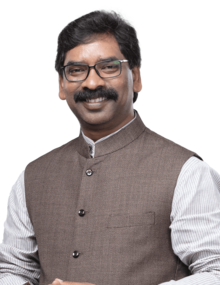 |
Shri Hemant Soren
The Chief Minister of Jharkhand is the chief executive of the Indian state of Jharkhand. In accordance with the Constitution of India, the governor is a state's de jure head, but de facto executive authority rests with the chief minister. Following elections to the legislative assembly, the state's governor usually invites the party (or coalition) with a majority of seats to form the government. The governor appoints the chief minister, whose council of ministers are collectively responsible to the assembly. Given the confidence of the assembly, the chief minister term is for five years and is subject to no term limits.
Six people have served as the state's chief minister since Jharkhand's formation on 15 November 2000. Half of them, including the inaugural officeholder Babulal Marandi, represented the Bharatiya Janata Party (BJP). His successor Arjun Munda, also from the BJP, is the longest-serving chief minister; he served for over five years, across three terms but never completed a full term. Two chief ministers, Shibu Soren and his son Hemant Soren, represented the Jharkhand Mukti Morcha (JMM). Shibu Soren's first term ended in just ten days, as he could not prove that he had the support of a majority of the house and was forced to resign. The state has also been governed by Madhu Koda, one of the few independents to become the chief minister of any state. In between their reigns, the state has also been under President rule three times. Raghubar Das, of the BJP, was the first chief minister to complete a full term in the state. Hemant Soren of the Jharkhand Mukti Morcha is the incumbent chief minister.
About Governor
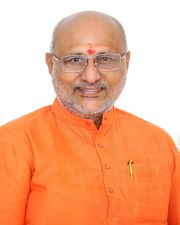 |
| 1. Name of the Governor |
Shri. C.P. RADHAKRISHNAN
|
| 2. Father Name |
late C. K. Ponnusami
|
| 3. Mother Name |
Smt. K. Janaki
|
| 4. Date of Birth |
04.05.1957 |
| 4. Place of birth |
Tiruppur |
| 5. Number of Children |
1 son and 1 daughter |
| 6. EDUCATIONAL QUALIFICATIONS |
B.B.A (Bachelor of Business Administration)
|
| 6. Position holding |
Governor of Jharkhand
|
| 8. PERMANENT ADDRESS : |
No.4/65,66, Sheriff Colony, Tiruppur- 641 604 |
| 7. Position Held: |
1974 State Executive Member, Bharatiya Jana Sangh
1996 Secretary, BJP, Tamil Nadu
1998 Member of Parliament from Coimbatore
1999 Member of Parliament from Coimbatore
1998 to 2003
a) Chairman of Parliamentary Standing Committee for textiles.
b) Member of Parliamentary Committee for public sector undertakings (PSU)
1998 to 2004 Member of Parliamentary Consultative Committee for Finance.
Member of the Parliamentary Special Committee to investigate the Stock Exchange misdeeds.
2004 Member of Parliamentary delegation to UN and addressed UN General Assembly.
Member of the 1st Parliamentary delegation to Taiwan.
2004 to 2007 BJP State President, Tamil Nadu.
i) As the Tamil Nadu BJP State President, took a Ratha Yatra of 19000 kms for 93 consecutive days with 5-point programme.
1) For Linking of all Indian Rivers.
2) Terrorism should be rooted out from Mother Bharath.
3) Common Civil Law for everyone.
4) Eradication of untouchability.
5) Eradication of Narcotic drugs.
ii) As the Tamil Nadu BJP State President, led a Patha yatra of 280 Kms from Madurai to Kambam for 14 days to raise the water level to its original 152 feet in Mullai Periyar Dam.
iii) As the Tamil Nadu BJP State President led another Patha Yatra of 230 Kms from Gudiyatham Tamil Nadu to Kuppam Andhra Pradesh for 11 days to save Palar River.
2020-2022-All India in charge of BJP, Kerala.(Prabhari)
|
| 8. Extra Activities |
- Interested in Sports especially Table Tennis, Cricket & Volley Ball.
- College Champion of Table Tennis, long runner in Athletics.
- Doing research on Political Science and doing a Doctorate on the Topic Fall of Communism
|
| 8. Government Position held |
Appointed as Chairman, Coir Board, Kochi under MSME, Government of India,from 27th January 2016 for a Period of three Years. During this tenure Coir Export from India reached the all-time high of Rs 2532 crores. The period of appointment was further extended for another period of one year as special extension. |
| 8. Countries visited |
1)U.S.A, 2) U.K., 3) France 4) Germany 5) Italy 6) Spain 7) Portugal 8) Norway 9) Denmark 10) Sweden 11) Finland 12) Belgium 13) Holland 14) Turkey 15) China 16) Malaysia 17) Singapore 18) Taiwan 19) Thailand 20) Egypt 21) U.A.E, 22) Bangladesh 23) Indonesia 24) Japan |
Jharkhand
The 28th state of the Indian Union was brought into existence by the Bihar reorganization Act on November 15,2000- the birth anniversary of the legendary Bhagwan Birsa Munda. Jharkhand is famous for its rich mineral resources like Uranium, Mica, Bauxite, Granite, Gold, Silver, Graphite, Magnetite, Dolomite, Fireclay, Quartz, Fieldspar, Coal (32% of India), Iron, Copper (25%of India) etc. Forests and woodlands occupy more than 29% of the state which is amongst the highest in India.
The most important information about Jharkhand includes its capital city, the basic parts of its government, like the chief minister and the governor, the population of the state and its weather conditions. Other important information on Jharkhand is the means of communication in the state, the various languages spoken and the basic infrastructure of Jharkhand.
The capital city of the state of Jharkhand is Ranchi. The level of progress this city has shown since the birth of the state of Jharkhand proves that it has the potential to become one of the leading industrial cities of the entire country of India.
The chief minister of Jharkhand is Madhu Kora. He has been a member of the Legislative Assembly in the years 2005 and 2000. The governor of the state of Jharkhand is Syed Sibtey Razi.
An important aspect about Jharkhand is the total population of the state, which is 2,18,43,911. The major languages spoken in Jharkhand include Bhojpuri, Urdu, Hindi, Bengali, Oriya, Kharia, Bhumij and Ho.
An important piece of information about Jharkhand is its transportation. The state of Jharkhand is easily accessible by rail, air and road. The capital city of Ranchi houses an airport of its own. The major railway station of the state is also located at Ranchi. Some good roads are being constructed in the state.
Some of the important districts of Jharkhand are Ranchi, Palamu, West Singhbhum, East Singhbhum, Hazaribagh, Bokaro, Deoghar, Dhanbad and Koderma.
The state is not lagging behind in its infrastructure. To cater to the need of various industries, the infrastructural development of Jharkhand has become absolutely necessary.
RANCHI
Ranchi is the capital city of Jharkhand, India. Ranchi was the center of the Jharkhand movement for a separate state for tribal region of south Bihar. This state was formed on the 15th of November 2000, by carving out the districts form the Chhotanagpur and Santhal Parganas divisions of Bihar. Chhotanagpur plateau consists of the three smaller plateaus of Ranchi, Hazaribag, and Koderma.
The city of Ranchi is located at an altitude of 654 meter above sea level on the plateau of Ranchi. As part of Bihar, it used to be the summer capital from the time of the British Raj because of its cool and salubrious climate. Temperature range from 20°C - 37°C in the summer and 6°C - 22°C in winter. The Subarnarekha river flow by the side of the city.
JAMSHEDPUR
Jamshedpur, as the burgeoning township was named in 1919 in tribute to Tata Steel's Founder, is India's first planned industrial city. It is a model for the harmonious co-existence of industry and environment. Acres of verdant parks and gardens dot the city and provide bucolic sanctuaries from the pressures of everyday life.
Jamshedpur, also called Tatanagar is just 171 kms from Dhanbad & 140 kms from Ranchi. Both the names come from the legendary Jamshedji Tata. It was his vision that saw Bihar in the steel map of world so long back. Iron ore found in the area made Jamshedpur the idle location for a steel plant. Jamshedpur has a number of tourist attractions too.
DEOGHAR
Located in northeastern Jharkhand, Deoghar is a major Hindu pilgrimage and a famous health resort. It has the ancient temple of Baba Baidyanath, which is one of the twelve 'jyotirlingas' in India. Baidyanath Dham, situated in the Santhal Parganas of Bihar, is a very important piligrim centre. It's famous for the temple of Shiva-Baidyanath and the place is a popular holiday centre. Deoghar is an ancient town famous for its group of 22 temples dedicated to the Hindu god Shiva. Numerous Buddhist ruins are also located nearby. Deoghar has a hospital, a tuberculosis clinic, and a leper asylum and houses several colleges (including a teacher-training institute) affiliated with Bhagalpur University. The Muslim invader Bhaktiyar Khilji made Deoghar his capital in 1201 after the conquest of Bihar.
BOKARO
The district of Bokaro commonly known as the steel city came into existence in the year 1991. It is situated on the Chhota Nagpur Plateau and was formed by carving out one subdivision consisting of two blocks from Dhanbad district and six blocks from Giridh district. The district headquarters is at B S City which is located at latitude of 23.29 and longitude of 86.09. The District Bokaro has a Geographical area of 2861 sq Km and 357663.36 Hectares of Land. The Average altitude of the Land is 210 mts from mean sea level. The nearest small town to the steel city is CHAS.
CHATRA
The Chatra district is situated in the extreme northwest part of Jharkhand. The district came into existence in 1991, was previously a part of Hazaribagh district.
The district is bounded on the north by Gaya (Bihar State) district and Hazaribagh district and on the east by Hazaribagh district, on the south by Palamu and Ranchi district and on the west by Gaya (Bihar State) and Palamu district The major portion of the Chatra district is covered by forest (more than 60%) and has scattered settlement patterns.
DHANBAD
The Dhanbad district situated in the state of Jharkhand lies between 23o37'3" N and 24o4' N latitude and between 86o6'30" E and 86o50' E longitude. The district is bounded on the west by Giridih and Bokaro on the north by Giridih and Dumka and on the east and south by Purulia district of West Bengal.
There are 100850 acres of hillocks and 56454 acres of forests. It is about 500-1000 feet above Sea level. Its soil is by and large lateritic in nature.
Odisha
odisha.gov.in
About Chief Minister
| 1. Name of the Chief Minister |
Shri Naveen Patnaik
|
| 2. Party Affiliation |
Biju Janata Dal
|
| 3. Constituency |
073-HINJILI
|
| 4. Marital Status |
Unmarried |
| 5. Hobbies : |
Reading, watching programmes on culture, history and environment |
| 6. Special Interest: |
Culture and environment |
| 7. Social Activities : |
Founder Member, Indian National Trust for Art and Cultural Heritage Cultural Activities (INTACH) |
| 8. EDUCATIONAL QUALIFICATIONS |
B.A.. from St. Stephens College, Delhi University.
|
| 9. Book Written: |
A Second Paradise, A Desert Kingdom and The Garden of Life
|
| 10. Permanent Address : |
At- Naveen Nivas, Aerodrome Road, P.O.-Bhubaneswar,
Dist.-Khurda, Pin-751001 (Odisha)
Tel. No.(O) 2531100,2535100,2531500, EPABX 2163
Tel. No.(R) 2590299, 2591099,2590844,2591100,2590833
|
About Governor
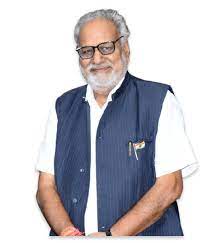 |
Prof. Ganeshi Lal
Prof. Ganeshi Lal was sworn in as the Hon'ble Governor of Odisha on 29th May 2018.
He was administered the oath of office by the Hon'ble Chief Justice of High Court of Odisha Shri Justice Vineet Saran in a function held at the Abhishek Hall of Raj Bhavan.
Prof. Ganeshi Lal was sworn in as the Hon'ble Governor of Odisha on 29th May 2018. He was administered the oath of office by the Hon'ble Chief Justice of High Court of Odisha Shri Justice Vineet Saran in a function held at the Abhishek Hall of Raj Bhavan.
Prof. Lal was born in Sirsa, Haryana on 1st March, 1942 and holds a degree in English Honours. He further went on to gain a post-graduate degree in Mathematics. He was brilliant in studies and stood First Class First in FA, BA and MA Class and was a Gold Medallist.
After completing his education, he became an academician and served as a professor in various government colleges of Haryana between 1964 and 1991.
Since 1962, Prof. Lal is actively associated with the Rastriya Swayamsevak Sangh (RSS) and held posts in the Hisar, Rohtak Wing of RSS.
Prof. Lal's political career started with grassroots organisations of the Bharatiya Janata Party (BJP). He was former State President of Haryana BJP, a former Chairman of Akhil Bharatiya Vidyarthi Parishad, Haryana, and former National President of the BJP Disciplinary Committee. During Emergency period in the country in 1976, Prof. Lal was sent to jail. He also actively participated in the Ram Janmabhoomi Movement.
Prof. Lal was elected as MLA from Sirsa constituency in 1996, and became a Minister in the Haryana Vikas Party (HVP)-BJP Government in Haryana from 1996-99.
Prof. Lal is married to Smt. Sushila Devi.
Odisha
Odisha,formerly known as Orissa, is an Indian state on the subcontinent's south-east coast, by the Bay of Bengal.It is surrounded by the Indian state's of West Bengal to the north-east and in the east, Jharkhand to the north, Chattisgarh to the west and north-west and Andhra Pradesh to the south. It is the modern name of the ancient kingdom of Kalinga, which was invaded by the Mauryan Emperor Ashoka in 261 BCE. The modern state of Orissa was established on 1 April 1936, as a province in British India and consisted predominantly of Oriya speakers. 1 April is therefore celebrated as Utkala Dibasa (foundation day of Orissa). Cuttack remained the capital of the state for over eight centuries until 13 April 1948 when Bhubaneswar was officially declared as the new state capital, a position it still holds.
Odisha is the 9th largest state by area in India, and the 11th largest by population. Oriya (officially spelled Odia) is the official and most widely spoken language, spoken by three quarters of the population. Odisha has a relatively unindented coastline (about 480 km long) and lacked good ports, except for the deepwater facility at Paradip, until the recent launch of the Dhamara Port. The narrow, level coastal strip, including the Mahanadi river delta supports the bulk of the population
Bhubaneswar
Bhubaneswar, the capital of Orissa, is also popularly known as the "Temple City of India". Being the seat of Tribhubaneswar or 'Lord Lingaraj', Bhubaneswar is an important Hindu pilgrimage centre. Hundreds of temples dot the landscape of the Old Town, which once boasted of more than 2000 temples. Bhubaneswar is the place where temple building activities of Orissan style flowered from its very inception to its fullest culmination extending over a period of over one thousand years.
The new Bhubaneswar with its modern buildings and extensive infrastructure perfectly complements its historic surroundings. With facilities to cater to every type of visitor, Bhubaneswar makes an ideal tourist destination.
Konark
The magnificent Sun Temple at Konark is the culmination of Orissan temple architecture, and one of the most stunning monuments of religious architecture in the world. The poet Rabindranath Tagore said of Konark that 'here the language of stone surpasses the language of man', and it is true that the experience of Konark is impossible to translate into words.
The massive structure, now in ruins, sits in solitary splendour surrounded by drifting sand. Today it is located two kilometers from the sea, but originally the ocean came almost up to its base. Until fairly recent times, in fact, the temple was close enough to the shore to be used as a navigational point by European sailors, who referred to it as the 'Black Pagoda'.
Keonjhar
Keonjhar, the district headquarters of the district of Keonjhar offers varieties of attractions to the tourists. It is the most convenient base from where visitors can plan their visit to various places of interest in the district.
Bhawanipatna
BHAWANIPATNA, the headquarters of Kalahandi District, is a town of numerous temples dedicated to different deities of Hindu pantheon. Named after its presiding deity 'Bhawanishankar', it is the most convenient base for touring various places of interest in the district and the nearby district of Nawapara.
Phurli Jharan, a perennial waterfall of 16 mtrs. high has a special charm of its own - 15 km. The old capital of the ex-State of Kalahandi, Junagarh was a well built fort with Oriya inscriptions on its temple walls- 26 km. The historic fort Asurgarh is only 35 km.
Karlapat, known for charming wildlife, is 32 km from Bhawanipatna. Nearby is Khanduala fall. A short distance from Karlapat is Thuamul- Rampur, a little slice of paradise on earth. On the confluence of the rivers Tel & Utei, Belkhandi, 67 km from Bhawanipatna is a place of archaeological importance.
The Ambapani hills (77 km) with its frolicking valley called 'Haladigundi' is a place for viewing colourful wildlife and 7 km away from here is the prehistoric cave paintings at Gudahandi.
Budhikomna houses the unique brick temple of Pataleswar - 40 km from Khariar and 115 km from Bhawanipatna. Also 9 km east of Khariar is Yogimath, famed for the cave paintings of Neolithic age. Patalaganga, 40 km from Khariar, is considered as a holy spot.
How to get there : 418 km from Bhubaneswar, Bhawanipatna is connected by all-weather roads and regular bus services from important parts of Orissa. The nearest railway station is at Kesinga - 35 km.
|
|
|